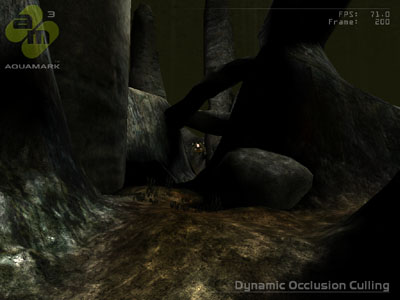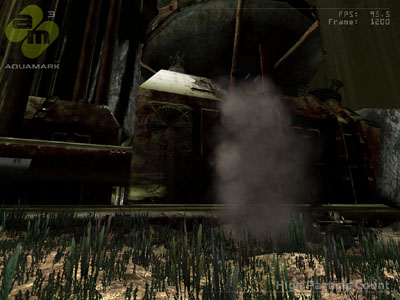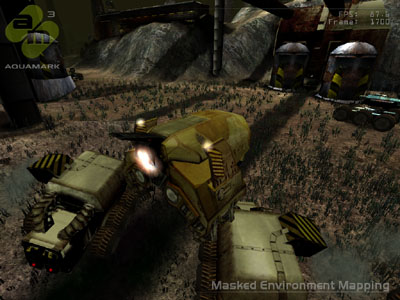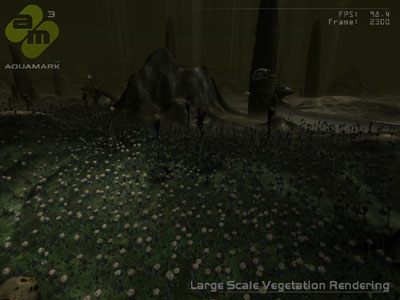Page 6 - In-Benchmark Screenshots #1
Right we've shown you how the menu structure of Aquamark 3 looks like. Now let's take a peek on the results and what we can see/expect in AM3. The test itself consist of 'chapters' and each chapter is a scene with specific technical challenges ranging from high particles counts towards Vertex and Pixel Lighting. Let's have a quick look on what you can expect to see in the test.
 Chapter #1 - Dynamic Occlusion Culling
Chapter #1 - Dynamic Occlusion Culling
By real-time occlusion culling, the engine can eliminate hidden objects in real-time. Real-time occlusion culling is based on hardware occlusion culling features of modern 3d cards. Because real-time occlusion culling works without any preprocessing of the scene, it works also for dynamic occluders and dynamic worlds. If your graphics card can handle it wisely, it'll be very efficient and boost up the frame and fill rate significant.

Chapter #2 - High Particle Count
You can call it bits and pieces, a tremendous high amount of small 3D objects. The more the better, yet the more the heavier on the graphics card.

Chapter #3 - Masked Environment Mapping - Speaks for itself, just look at the 10x7 image tu understand the dynamics here. Look closely at the objects.

Chapter #4 - Large Scale Vegetation Rendering - A lot of polygons, each piece pf vegitation is of course moving along with the water waves. A tremendous task for the graphics processor. You can compare it a bit with 3DMarks Nature scene's.
